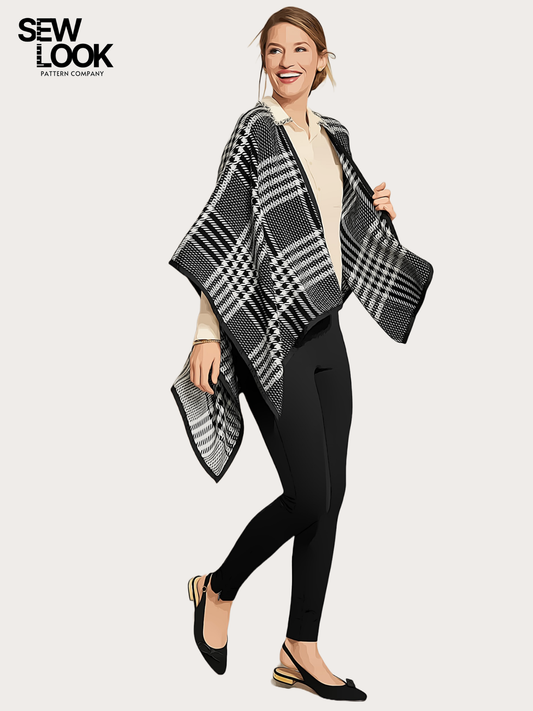SEWING 101 - ANATOMY OF A MACHINE SEWING NEEDLE
Sewing Basic 101 - Anatomy of a Machine Sewing Needle
It’s amazing how something so small can change the outcome of a sewing project? Choosing the right type or needle and needle size is so important. Most of the time, we can use the universal needle and our projects will turn out amazing. Other times, not so much. Let’s discuss the sewing needle and what to look out for when choosing one for your next sewing project.
The right needle glides through your fabric, doesn’t leave unnecessary large holes, fray, crooked stitches, skipped stitches, and broken threads. It’s funny because you wouldn’t even think about the sewing needle if it weren’t for all the flaws from choosing the wrong needle. If everything turned out right and perfect the first time, you wouldn’t even give this a second thought.
So, this unassuming tool is the key to turning fabrics into wearable works of art. In this blog post, we embark on a journey to uncover the anatomy, functions, and types of the standard sewing machine needle, focusing on its crucial role in elevating your garment-making endeavors.
A sewing machine needle looks simple but has many different parts.
-
The shank is the part that seats into your sewing machine; the flat side usually goes towards the back, and the rounded side towards the front. Some specialty needles may have a completely round shank.
-
The shaft is the part of the needle that tapers down from the shank.
-
The groove runs in the front of the needle to the eye. The thread is seated securely in this groove when the needle penetrates the fabric. You can feel the groove by passing your fingernail over the front of the needle.
-
The needle eye of the needle is where the thread passes from the front to the back. Different types of needles will have different types of eyes.
-
The scarf is located on the BACK of the needle, and is a smooth indentation behind the eye. You can easily find the scarf with your finger. The scarf is where the hook passes to pick up the top thread from the needle to pass it around the bobbin to create a lock stitch, and can be shaped differently on various types of needles.
-
The point is the first part of the needle to penetrate the fabric. Different types of needles will have different points engineered to work best with specific kinds of fabrics.
Standard Sewing Machine Needles
-
Universal Needle: Your go-to choice for a wide range of woven fabrics, offering versatility and dependability.
-
Ballpoint Needle: Crafted for knit fabrics, it minimizes snags and preserves fabric integrity.
-
Sharp Needle: A precision tool for lightweight and delicate fabrics, ensuring clean punctures.
-
Jeans Needle: Engineered to handle heavy and densely woven fabrics like denim and twill.
-
Leather Needle: Sharp, angle points for heavy and dense leather (also good for sewing layers of denim)
Needle Sizing
Needles come in various sizes noted by a set of numbers. The European sizing system gauges the needle diameter in fractions of a millimeter, while the American size is usually a smaller number. The smaller the number in either European or American sizing, the finer the needle. Basic needle sizes are as follows.
For very fine or lightweight fabrics: use size 60/8 or 65/9
For light weight fabrics: use size 70/10 or 75/11
For medium weight fabrics: use size 80/12 or 90/14
For heavy weight fabrics: use size 90/14 or 100/16
For very heavy fabrics: use size 110/18
Major Functions of the Standard Needle
The standard sewing machine needle performs vital functions that impact the quality of your stitches:
-
Penetration: The needle pierces the fabric, creating a pathway for the thread.
-
Stitch Formation: As the needle retracts, the upper thread interlocks with the bobbin thread, forming a stitch.
-
Thread Control: The groove and eye manage thread tension, ensuring smooth stitching.
-
Stitch Length and Width: Needle selection influences stitch dimensions, allowing customization.
Types of Standard Sewing Needles
Within the realm of standard sewing needles, you'll find variations tailored to specific fabrics and projects:
-
Universal Needle: Your go-to choice for a wide range of woven fabrics, offering versatility and dependability.
-
Ballpoint Needle: Crafted for knit fabrics, it minimizes snags and preserves fabric integrity.
-
Sharp Needle: A precision tool for lightweight and delicate fabrics, ensuring clean punctures.
-
Jeans Needle: Engineered to handle heavy and densely woven fabrics like denim and twill.
Navigating Needle Selection
Choosing the right standard sewing machine needle is a pivotal step in garment sewing:
-
Fabric Compatibility: Select the appropriate needle type based on the fabric's weight and texture.
-
Project Considerations: Choose needles that complement your sewing technique, whether it's topstitching, serging, or quilting.
The Standard Needle's Journey Through Time
The standard sewing machine needle's evolution is a testament to innovation and craftsmanship:
-
Historical Roots: Needles made from bone, ivory, and metal have shaped the art of sewing for centuries.
-
Modern Advancements: Technological progress has led to the development of precision-engineered needles designed for specific tasks.






